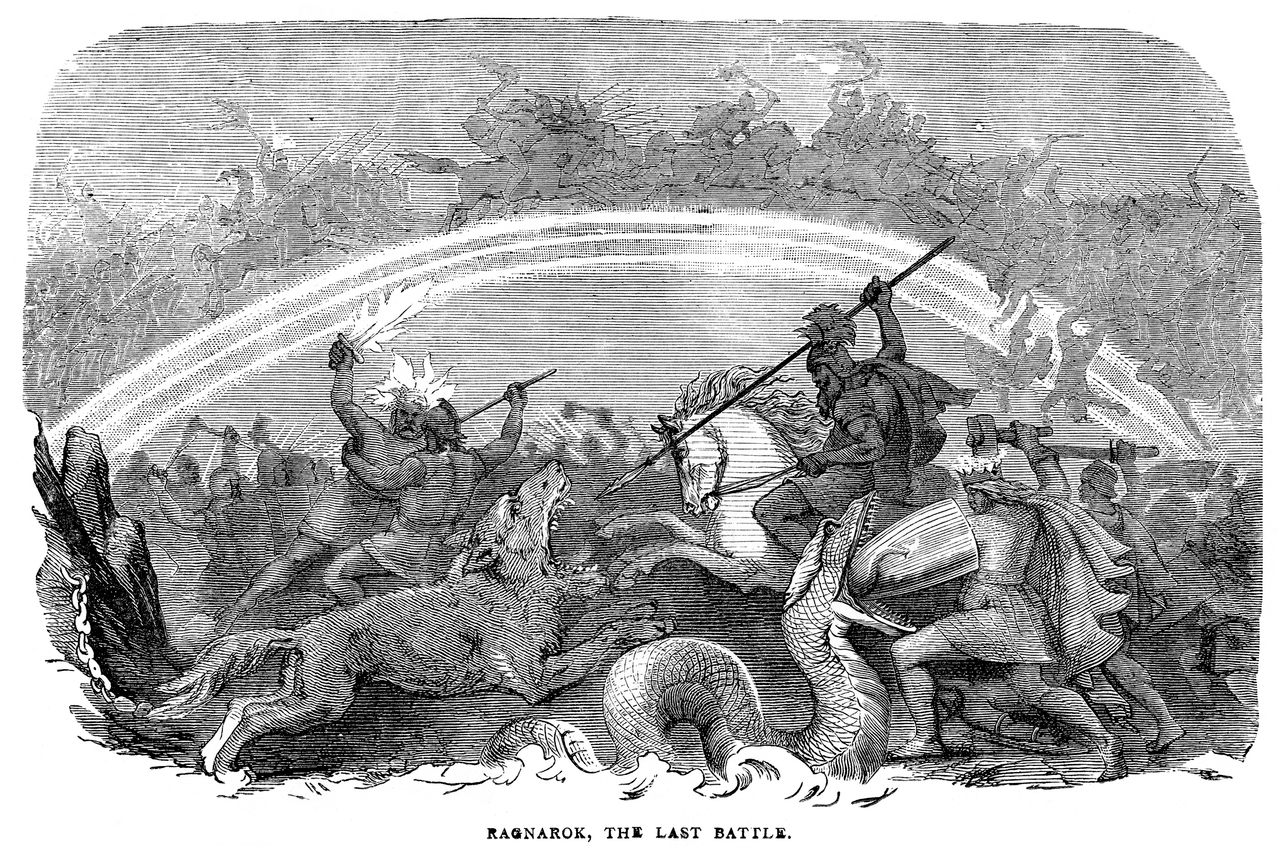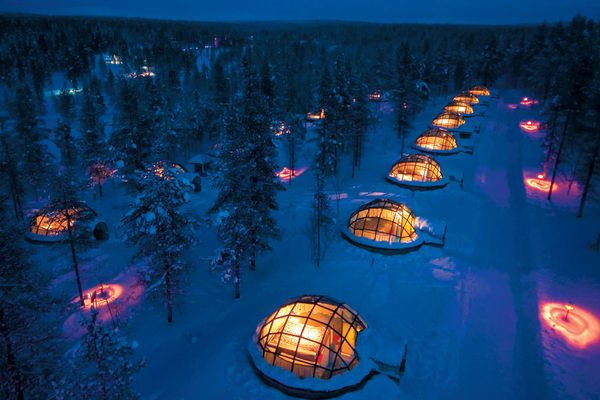7 Stories That Show Just How Metal the Nordics Are
From Viking werewolves to snacking on pickled ram’s testicles, Europe’s northernmost countries are badass.
The Nordics, also known as Norden, include Greenland, Denmark, Iceland, Norway, Sweden, the Faroe Islands, and Finland. These lands are home to some of the most badass historical characters, festivals, and culinary curiosities. Bone chewing, werewolf hunting, and feasts of rotten meats are all fair game among Nordic communities of the past—and sometimes the present. Take a trip to Viking hell, sail fearlessly into the unknown, or dig into some exceptional eats with these seven metal stories from across the Nordic world.
Viking Hell Is Just as Metal as You’d Expect
by Nicky Nielsen
Courageous Vikings who died in battle could expect to head off to Odin’s Hall, Valhǫll (or Valhalla), and there feast with the gods for all eternity or, according to some sources, be chosen by Freja, the goddess of love, to live in the sweet meadows of Folkvangr.
But many more Vikings died off the battlefield, done in by disease, malnutrition, and other inglorious ends. While our understanding of what ordinary Vikings could expect in the afterlife is limited, what we do know is rather bleak.
How Are These Trees Floating Over a Finnish Road?
by Andrea Prada Bianchi
In June 1941, a young photographer captured a surreal scene: A Finnish Army car on a dirt road a few miles from the border with the Soviet Union. Above the vehicle, a row of pine trees hangs in the air. It’s not a prank or trick of the camera, however. During World War II, when Finland occupied a difficult place in the conflict between Nazi Germany and Stalinist Russia, it was common for the army to camouflage everything with trees and foliage to deceive Russian planes and observation towers.

The First Viking Woman to Sail to America Was a Legendary Traveler
by Frank Jacobs
She’s been called “the greatest female explorer of all time,” and the “best-traveled woman of the Middle Ages.” Just after the year 1000, she gave birth to the first European baby in North America. And she concluded her global odyssey with a pilgrimage on foot to Rome. Yet few today can name this extraordinary Viking lady, Gudrid the Far-Traveled, even if they have heard of her father-in-law Erik the Red and brother-in-law Leif Erikson.
Ancient Gum Reveals Stone-Age Teens Chewed on Bones and Made Poison
by Olivia Young
Our ancient forebears chewed gum just like us—except their version of “gum” was actually a tarry tree resin, and we can be sure it tasted nothing like Wrigley’s Doublemint. Samples of this birch pitch still embedded with 10,000-year-old tooth marks were discovered in Sweden several decades ago, but a recent study has revealed more about what the prehistoric teenagers ate, along how they used their teeth as tools.
The Long, Hidden History of the Viking Obsession With Werewolves
by Sarah Durn
The story of thieves-turned-werewolves Sigmundr and Sinfjötli is one of the Viking world’s oldest and most popular tales, shared orally for centuries before being written down in the Vǫlsunga Saga around 1270. It turns out the Vikings were a bit obsessed with wolves and the people—in stories, anyway—who become them. There are records of dozens of werewolf stories told around Viking hearths to help pass long, dark Scandinavian winters. Wolves, such as the world-ending Fenrir, are woven into their mythology. Viking warrior bands would growl and howl and bite in battle, and sometimes even attack their compatriots in their frenzy. It’s something victims of Viking raids also saw in the Norsemen who descended on them from the seas; they referred to them as “sea-wolves” and “ware-wolves” in medieval histories. Even after the raids stopped, popular stories linked Viking descendants to werewolves.

Thorrablot: This Midwinter Food Festival Honors Iceland’s Pagan History
from Gastro Obscura
Before the 10th century, Icelanders worshiped the Æsir, or Norse gods. During their calendar month of Thorri (which runs from mid-January to mid-February), locals celebrated Thorrablot, a midwinter festival named for either Norwegian king Thorri Snærsson or the God of Thunder himself, Thor.
Locals still mark the occasion with traditional Thorrablot foods. Smoked, salted, dried, pickled, and rotten meats are the star of the show, including traditional favorites such as pickled ram’s testicles, rotten shark meat (hákarl), boiled sheep’s head (svið), dung-smoked lamb (hangikjöt), and wind-dried white fish (harðfiskur). For folks with less adventurous tastes, smoked salmon, sausages, rye bread, and flatbread are also on the menu. Participants wash it all down with brennivín, a potent local liquor that’s fondly referred to as “Black Death.”
Unearthing the Secret Life of a Viking Warrior Woman
by Sarah Durn
In 1871 on the sleepy island of Birka, Sweden, Hjalmar Stolpe, a Swedish entomologist turned archaeologist, discovered the lavish grave of a Viking warrior. Around the seated body were the remains of two sacrificed horses, as well as a double-edged sword, a scramasax (a long, thin knife), a bow, a shield, and a spear—every weapon known to the Viking world. It was an astonishing find, especially since Viking warrior graves rarely contain more than three weapons. There was also a full set of hnefatafl, the board game often known as Viking chess, which indicates the strategic thinking and authority of a war leader. A thousand years ago, the site would’ve abutted the Warrior’s Hall, where a garrison lived to protect the bustling Viking town of Birka. The weapons, game pieces, location: Everything told scholars that the man buried in what is known as grave Bj 581 was a prominent, well-respected Viking warrior. No one was really prepared when DNA tests were conducted in 2017 and a new story began to emerge. This was a prominent warrior, all right, but the occupant of Bj 581 wasn’t a man. She was a woman.






















Follow us on Twitter to get the latest on the world's hidden wonders.
Like us on Facebook to get the latest on the world's hidden wonders.
Follow us on Twitter Like us on Facebook